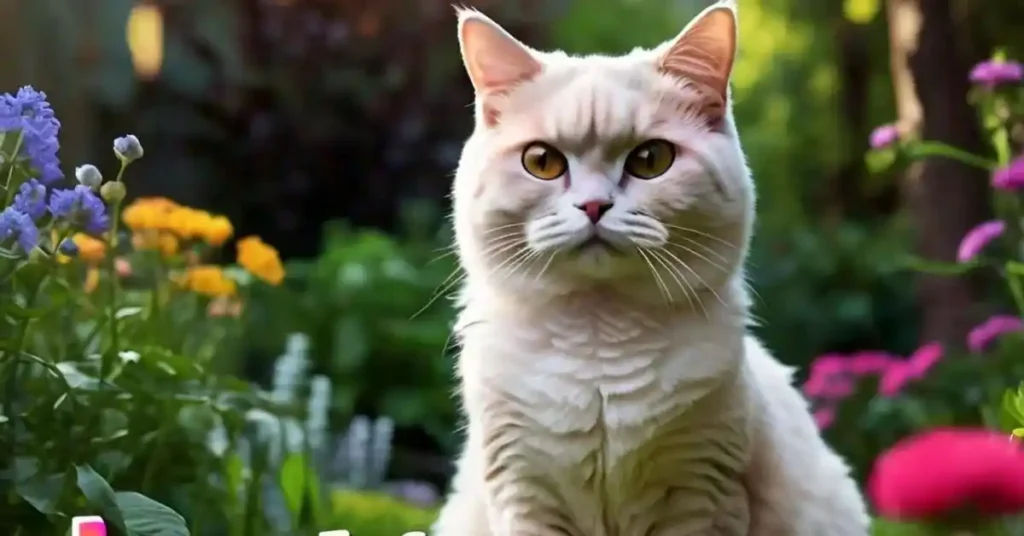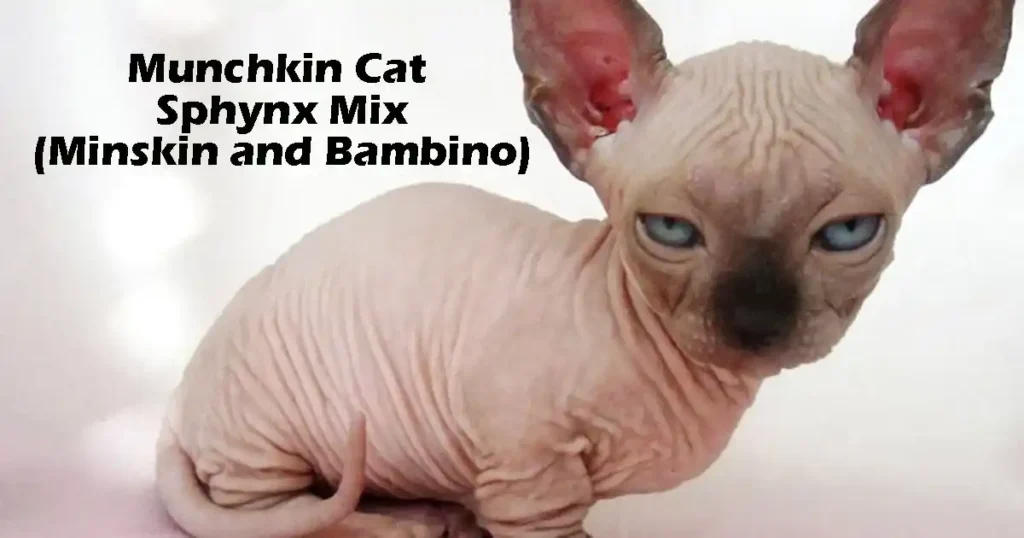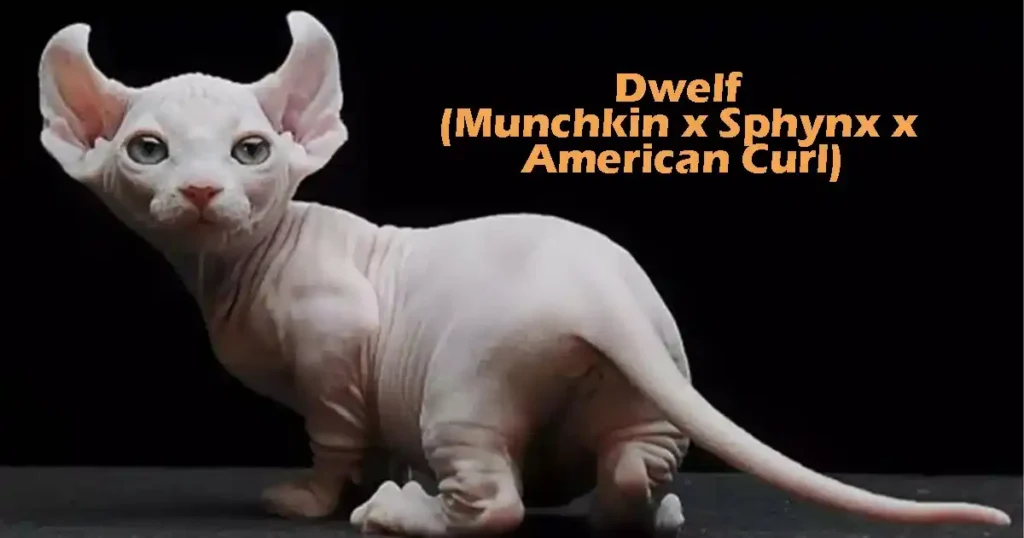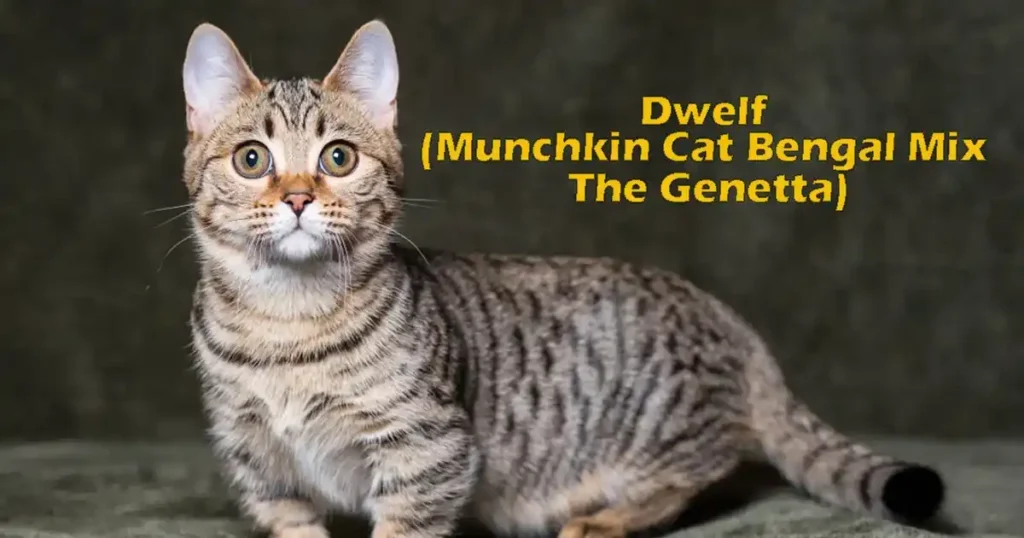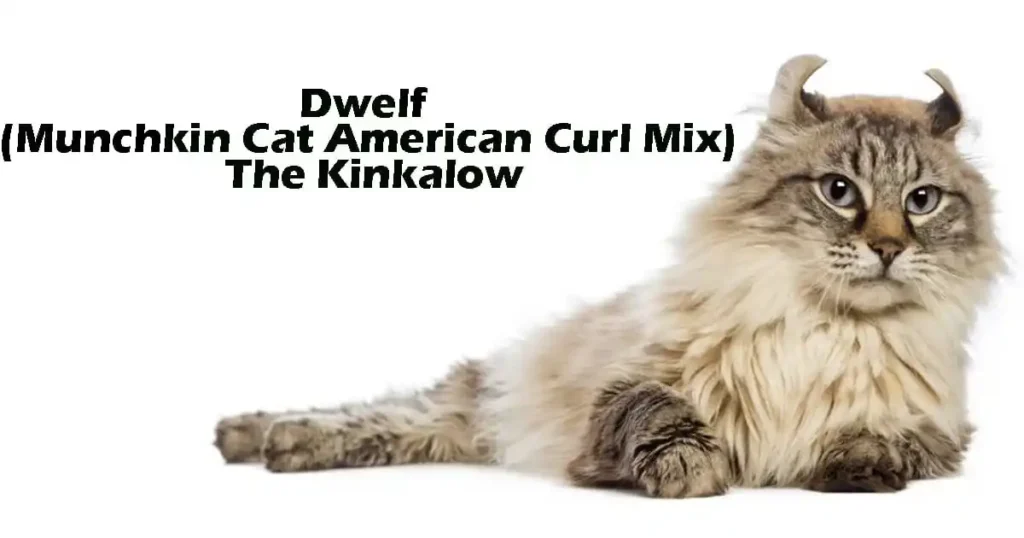The Lambkin is a rare and unique hybrid cat breed that combines traits from the Munchkin and Selkirk Rex cats. These small-statured felines are known for their short legs, curly or crinkled coat, and distinctive appearance.
Known for their charming looks and friendly nature, Little lamb cats, often referred to as Little lambs cats, offer a very pleasant blend of (features/ qualities/ traits) from both parent breeds. The Munchkin cat is famous for its short legs and (full of life and energy) behavior/personality. Starting in the 1980s, this breed is seen as its (related to tiny chemical assembly instructions inside of living things) change that results in its (having a unique quality) height.
Their playful nature makes them an appealing choice for many cat lovers. On the other hand, the Selkirk Rex, developed in Montana in the late 1980s, is celebrated for its curly coat and easygoing personality. Created from an unplanned (and sudden) change Selkirk Rex cats have a fancy and comfortable, curly fur that sets them apart from other breeds. They are able to change and love participating in family activities.
Lambkin Cat Breed Info: Pictures, Facts & Traits
The Lambkin cat is a rare and unique hybrid breed that combines traits from the Munchkin and Selkirk Rex cats. Here are key facts about this distinctive feline:
Physical Characteristics
- Height: 7-8 inches
- Weight: 5-9 pounds
- Lifespan: 12-15 years
Lambkins have short legs, particularly in the front, inherited from their Munchkin parent. Their most distinctive feature is their curly or crinkled coat, which resembles lamb’s fleece, inherited from the Selkirk Rex. The coat can be short or long and comes in various colors and patterns.
Temperament and Personality
Lambkins are known for their:
- Gentle and affectionate nature
- High intelligence and curiosity
- Playful and energetic behavior
- Social and outgoing demeanor
These cats retain a kitten-like playfulness into adulthood and are generally good with children and other pets, making them excellent family companions.
Unique Traits
- Coat changes: Lambkin kittens are born with curly hair, which may straighten around 16 weeks of age. The characteristic curly coat typically returns between 8-10 months of age3.
- Rarity: Lambkins are extremely rare, with only a few dozen known worldwide4.
- Genetic diversity: Some Lambkins may be born with normal-length legs due to genetic inheritance3.
Care and Considerations
- Regular grooming is necessary to maintain their unique coat
- They require mental stimulation and interactive play
- Potential health monitoring may be needed due to their dwarf genetics
History of Lambkin Cat (Munchkin x Selkirk Rex)
The Lambkin cat is a unique and intriguing hybrid breed, resulting from the cross between the Munchkin and Selkirk Rex cats. To fully appreciate the Lambkin, it is essential to explore the histories of its parent breeds and the development of this hybrid cat.
Lambkins are an extremely rare breed, and obtaining a kitten can involve long waiting lists. As a crossbreed, Lambkins can inherit health issues associated with the Munchkin’s dwarfism, so it is crucial to purchase them from reputable breeders.
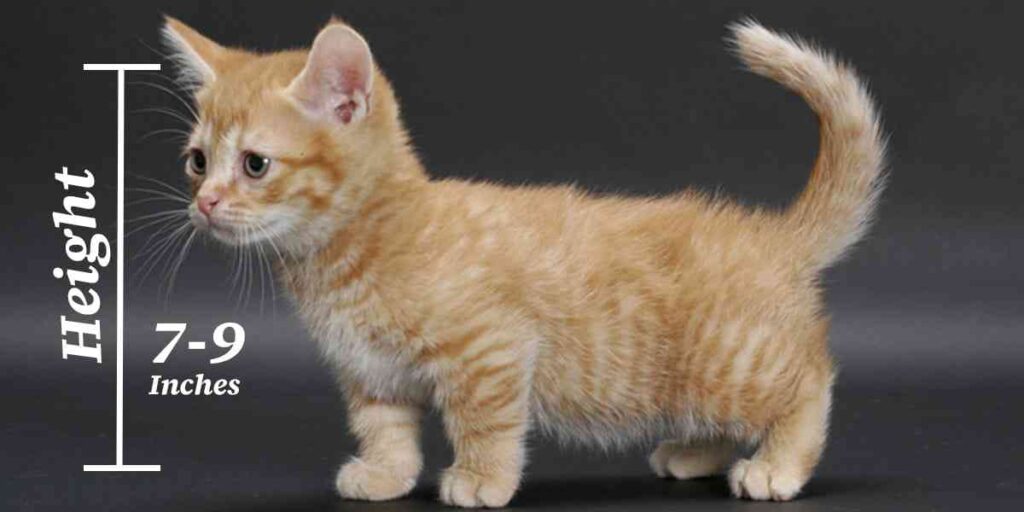
Physical Characteristics of Lambkin
The Lambkin Munchkin cat is distinguished by its short legs, a hallmark inherited from the Munchkin breed. These short legs give the cat a unique and endearing appearance, contributing to its distinctive gait. Despite the leg length, the Lambkin Munchkin maintains a well-proportioned and muscular body, ensuring it remains agile and playful.
- Size: Lambkins are generally small to medium-sized cats, weighing between 5 to 9 pounds and standing around 7 to 8 inches tall.
- Coat: They feature a soft, curly coat that can come in various colors and patterns. The curls are a result of a genetic mutation, giving them a plush and unique appearance.
- Head and Eyes: Lambkins have a rounded head with full cheeks and large, expressive eyes that can be green or blue, contributing to their endearing look.
- Tail: One of their most notable features is their long, curved, fluffy tail that tapers to a rounded tip.
What makes the Lambkin cat’s coat so unique
The Lambkin cat’s coat is unique due to its distinctive curly or crinkled texture, which resembles the fleece of a lamb. This distinctive coat is a result of the breed’s genetic heritage:
- The Lambkin inherits a curly undercoat from its Selkirk Rex parent, but lacks the topcoat typical in most cats.
- The coat has a soft, wool-like appearance and texture, often described as feeling like cashmere or a piece of lamb’s fleece.
- Lambkin kittens are born with curly hair, but their fur may straighten around 16 weeks of age, with some even experiencing fur loss.
- The coat can be either short or long and comes in various colors and patterns.
- Due to its unique texture, the Lambkin’s coat requires regular grooming to maintain its appearance and prevent tangling.
This distinctive coat, combined with the breed’s short-legged stature inherited from the Munchkin parent, contributes to the Lambkin’s endearing and visually captivating appearance.
Exploring the Meaning of “Lambkin” and its Variations
The term “lambkin” holds multiple meanings, each of which carries a unique cultural or contextual significance. In its most basic form, “lambkin” refers to a small lamb, evoking images of tenderness and innocence.
This word has evolved into various uses, from a verb implying warmth and comfort, to being a popular term for a breed of cat. As such, the term has found its place in everyday language and specialized areas alike, including literature, slang, and even pet breeding.
Lambkin in Literature and Language
In literature, the term “lambkin” has been used symbolically, often referencing vulnerability or innocence, as seen in poems like “A Motherless Soft Lambkin,” which explores themes of loss and nurture. Additionally, the word “lambkin” has become part of everyday speech, often used as a term of endearment.
Lambkin Cats: A Popular Breed
One of the most recognized uses of “lambkin” today is in the world of pet breeding. Lambkin cats, a crossbreed of the Munchkin and Selkirk Rex breeds, are adored for their unique appearance and gentle temperament.
These cats are characterized by their small stature, curly fur, and affectionate nature. The Lambkin cat breed is relatively new, having gained popularity due to its hypoallergenic properties and charming personality, making it an attractive choice for cat lovers.
Notable Figures with the Surname Lambkin
Many individuals with the last name Lambkin have made significant contributions across various fields, including literature, music, and business. Figures like Graham Lambkin, an experimental musician, have left a lasting impact on the arts.
Meanwhile, Frances Kay Lambkin has been a key figure in medical research, particularly in the study of neurodegenerative diseases. The widespread presence of the Lambkin surname in different professions highlights the diverse legacy associated with the name.
Lambkin in Pop Culture and Modern Uses
The word “lambkin” continues to appear in pop culture, such as in the “Moon and Me” children’s TV show, where characters known as Lambkins are featured. Moreover, the name Lambkin has also been used in the creation of various products, from dog toys to clothing lines.
Whether it’s in entertainment, product branding, or family names, “Lambkin” remains a versatile and widely recognized term with connections to both the past and present.
Personality and Temperament
Lambkins are known for their friendly and affectionate nature. They enjoy human companionship and are often described as being very social and interactive. These cats are also known to get along well with other pets, making them a good choice for multi-pet households.
Lambkin cats
Lambkin cats are a unique and endearing breed, known for their distinct appearance and gentle personalities. This breed is a cross between the Munchkin and the Selkirk Rex, resulting in a small, dwarf cat with soft, curly fur and short legs.
Lambkin as a Pet
Lambkins are well-suited for various types of households, including families with children, singles, and seniors. They are adaptable and can thrive in both apartments and larger homes. Their playful yet gentle nature makes them particularly good with children, providing endless hours of entertainment and companionship.
Physical Traits
Lambkins have a compact and muscular build, typically weighing between 5 to 9 pounds. Their most notable features are their short legs and plush, curly coat, which can come in various colors and patterns. Their round faces often have a sweet, expressive look, with large, bright eyes that enhance their charming appearance.
Personality
These cats are known for their affectionate and playful nature. Lambkins are friendly, social animals that thrive on companionship and love to be around people. They are often described as being gentle and laid-back, making them great pets for families, children, and other pets.
Playfulness and Interaction
Lambkin cats maintain a playful demeanor well into adulthood. They enjoy interactive play and can be entertained by toys, climbing structures, and engaging activities. Their friendly personality allows them to bond closely with their owners, often seeking attention and affection.
Care and Maintenance
Due to their curly coats, Lambkins require regular grooming to prevent matting and to keep their fur in good condition. Routine veterinary care, a balanced diet, and plenty of playtime are essential for their overall health and well-being.
Overall Appeal
With their adorable looks and loving temperament, Lambkin cats make wonderful companions. They bring joy and warmth to any home, making them a cherished addition to families and individuals alike.
Caring for a Lambkin
Diet and Nutrition: Lambkins require a balanced diet that includes high-quality protein, fats, and carbohydrates. It’s important to provide them with food that meets their specific nutritional needs to maintain their health and energy levels.
Exercise Needs: Despite their short legs, Lambkins are active and enjoy playing. Regular play sessions with toys or interactive games can help keep them fit and stimulated.
Grooming Requirements: Their curly coats require regular grooming to prevent matting and tangles. Brushing your Lambkin at least once a week is recommended, along with regular nail trimming and ear cleaning.
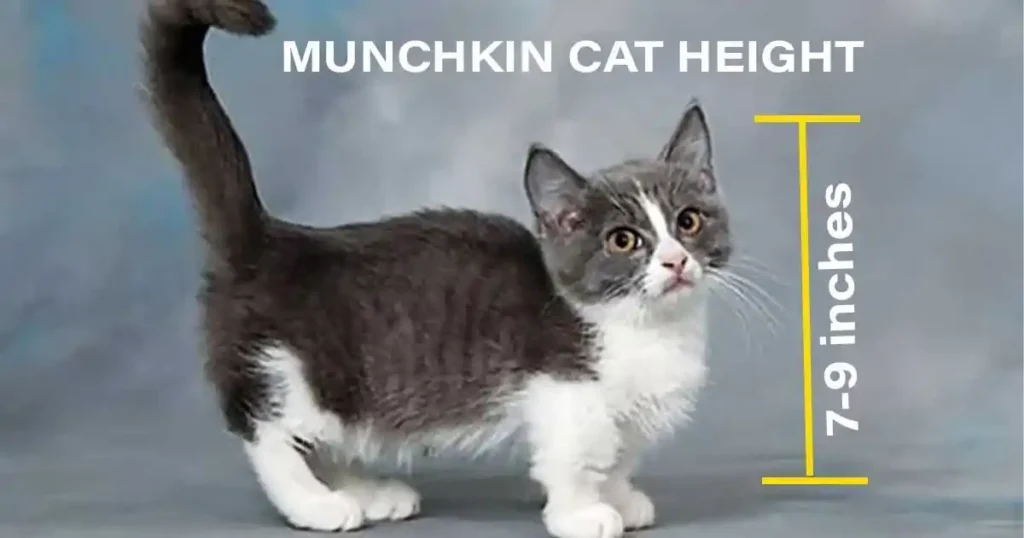
Health and Lifespan
The health and lifespan of the Lambkin Munchkin cat are important considerations for potential owners. Like any breed, they have specific health concerns and factors that can affect their overall well-being. Lambkin Munchkin cats typically have a lifespan of 12 to 15 years, which is fairly average for domestic cats. One of the primary health concerns for Lambkin Munchkins is related to their short legs.
However, responsible breeders avoid breeding two short-legged Munchkins together, as this can increase the risk of severe skeletal deformities and health issues in the offspring.
Adopting a Lambkin
Where to Adopt: Lambkins can be adopted from reputable breeders or rescue organizations that specialize in dwarf or curly-coated cats. While purchasing from a breeder is an option, adopting a Lambkin can be a more ethical and cost-effective choice.
Lambkin in Popular Culture
The Lambkin Munchkin cat, with its distinctive short legs and curly or wavy coat, has captured the imagination of many and has begun to make its mark in popular culture. While not as widely recognized as some other breeds, the unique appearance and charming personality of the Lambkin Munchkin have earned it a niche following among cat enthusiasts and pet lovers.
Training a Lambkin
Training a Lambkin Munchkin cat involves understanding its unique personality and leveraging its natural intelligence and curiosity.
Basic Training Tips: Lambkins are intelligent and can be trained to follow basic commands and use a litter box. Positive reinforcement techniques work best.
Advanced Training Techniques: For more advanced training, consider using clicker training or other reward-based methods.
Socialization Strategies: Early socialization with different people, pets, and environments can help ensure your Lambkin grows up to be a well-rounded and confident cat.
Traveling with a Lambkin
Traveling with a Lambkin Munchkin cat requires careful planning and preparation to ensure their comfort and safety throughout the journey. Here are some essential tips for traveling with a Lambkin Munchkin:
FAQs
What is the origin of the Lambkin breed?
The Lambkin breed originated in the United States by crossing the Munchkin and the Selkirk Rex.
How much exercise does a Lambkin need?
While Lambkins enjoy playtime, they don’t require excessive exercise. Regular play sessions are sufficient to keep them healthy and happy.
What are the grooming needs of a Lambkin?
Lambkins need regular grooming due to their curly coats. Brushing at least once a week is necessary to prevent matting and tangles.
Can Lambkins be left alone for long periods?
Lambkins enjoy human companionship and may become lonely if left alone for long periods. It’s best to ensure they have company or engage them with interactive toys.
Conclusion
Lambkins are a delightful and unique breed that offer a lot of love and companionship. Their charming appearance, combined with their affectionate and playful nature, makes them a wonderful addition to any home. Whether you’re looking for a new pet or simply want to learn more about this fascinating breed, the Lambkin is sure to capture your heart.
